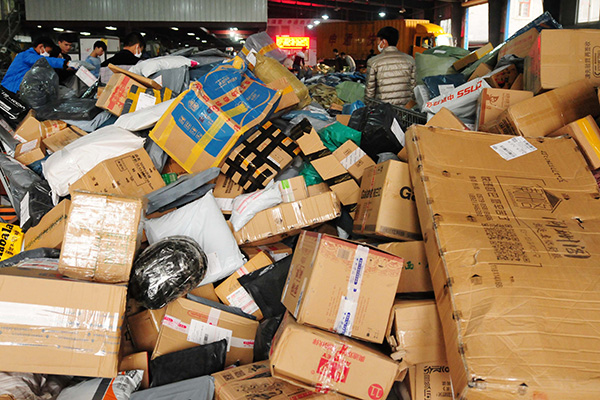Like the
predecessor legislation VerpackG sets responsibility for where packaging
materials end up. Packaging sellers must
make efforts to make certain their products are properly disposed. As the previous law packaging materials must
be licensed. However, now every company
shipping products to end users in Germany must register with a central agency
before selling to customers in the country.
Failure to comply can get a transgressor banned from the German market
and fined up to 200,000 Euros. Obviously
not at all reticent about setting up a new bureaucracy, Germany intends to get
control over packaging waste that can harm the environment.

Draconian
measures may be justified. Germany’s
Federal Environment Agency reported in November 2018, that Germans consume on
average more than 220 kilos of packaging per capita. This compares to 167.3 kilo on average for
each citizen in the European Union.
Germans have a well earned reputation as a throwaway culture. The habit has lead to the generation of over
19 million metric tons of packaging waste each year.
Recycling has taken
on in Europe in general and German in particular. More than 70% of packaging was recycled in
Europe in the year 2016, but rates vary widely from material to material. Paper and aluminum are quickly recovered and
reused, but valuable metals embedded in packaging are mostly left to landfills.
Likewise about three quarters of wood components in packaging goes to
waste. Only about half of plastic
packaging is recycled, leaving 8.7 million metric tons of plastic packaging at
large in Europe.
The Europeans
are hardly alone in the struggle against packaging waste - or
at least they should have compatriots.
In the United States containers and packaging make up the majority of
municipal solid waste - well over 80 million tons. The U.S. Environmental Protection Agency
(EPA) claims 51% of it is recycled and another 9% is used to in power
generation systems. That means 40% of
cast of packaging is sent to landfills.
The problem is
not just in where the packages end up.
It is also a matter of what resources are used to create the
packaging. Consider online retail. In the U.S. this channel grew by 16% in 2017
and likely grew by a similar rate in 2018.
Online retailers are dependent
upon a variety of packaging materials to ship products directly to consumers,
but it is the ubiquitous cardboard box symbolizes the trade. About 165 billion packages are shipped
annually in the U.S. that require felling about one billion trees per year to
fabricate the cardboard.
Even when
consumers shop in brick mortal stores there are resources used and wasted for
packaging. According to the Wall Street
Journal, consumers in the U.S. use 100 million plastic shopping bags each year. Four out of five of these bags are
plastic. Those bags require as much as
12 million barrels of oil to manufacture.
These are large numbers, so to make it more relatable consider that
about 14 plastic grocery bags is equivalent to the amount of gas required to
drive one mile. That is a fairly carbon
intensive shopping experience.
What are the
consequences of plastic grocery bags? The
average U.S. household carries about 1,500 plastic grocery bags back to their
homes each year. According to one the
largest waste handlers in the U.S., Waste Management (WM: NYSE) only about 10% of them are recycled. If not captured in a landfill, the rest fly
about the countryside or float in waterways.
In the next few posts we will look at the packaging
industry to find out if investors can lay down capital to support
environmentally friendly commerce and still realize a competitive return.
Neither the author of the Small Cap Strategist web
log, Crystal Equity Research nor its affiliates have a beneficial interest in
the companies mentioned herein.
No comments:
Post a Comment